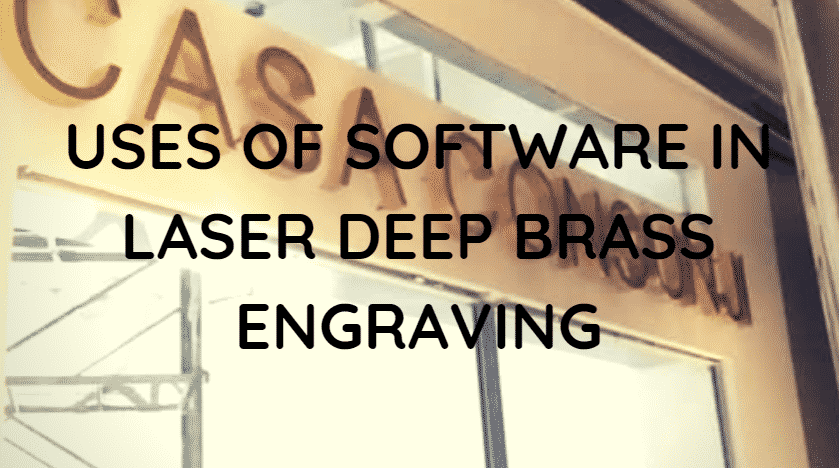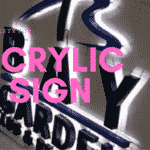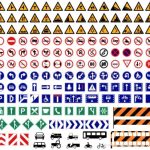
Uses of software in laser deep brass engraving
Adaptability and also capacities are increased
High power lasers are extensively made use of for brass engraving logo designs, attractive artwork, and 2D, 2.5 D, and 3D patterns on steels as well as alloys. Laser brass engraving is a non-contact, non-corrosive innovation that provides top quality at high throughput when contrasted to standard milling approaches. Laser deep brass engraving prevails in the auto, aerospace, protection, as well as tooling markets where component traceability and recognition also under severe problems are of vital significance.
There is a substantial distinction in between deep engraving and the typical voting procedure regarding deepness, and measurement (2.5 D, 3D). For the most part, noting produces a shade modification as a result of warmth or pigments existing inside the product. If a surface area is engraved to the deepness of < 0.001 in., it can be thought about as noting. On the various other hand, deep brass engraving eliminates the mass of the product by dissipation. As a whole, the deepness of greater than 0.003 in. Can be specified as deep brass engraving.
When choosing a laser deep engraving system, it is necessary to bear in mind that the laser resource is just one element of the system. An extensive deep brass engraving software with the vital functions explained in this write-up plays a big function in the laser deep engraving procedure.
Design generation
Criterion laser noting software application to permit customers to produce as well as fill things such as message, barcode, logo designs, and pictures. A software program developed particularly for deep engraving makes this an action even more by making it possible for individuals to develop 2.5-D designs by defining the required specifications.
2.5-D things are produced by offering upright forecast to a 2D item. Making use of deep engraving software application, an individual can produce 2.5-D things from a 2D photo by defining the called for deepness. Along with the upright forecast, the customer can forecast 2D forms right into balanced improvements, such as conical, round, and tip forms. This function is really valuable when producing much of the here and now day-commercial engraving needs. See NUMBER 1 as an example of a deep personalized lift switch on brass engraving, and cone-shaped as well as action form engraving onset steel devices.
Layering
As soon as a 2.5 D or 3D version is produced, it awaits layering, which includes cutting the whole item in the
NUMBER 2. Schematic layout of layering as well as loading utilized in items.
upright airplane right into several areas (NUMBER 2). The layer department mostly depends upon the form of the pattern to be etched as well as the product elimination price of the laser for the offered handling criteria. Greater brass engraving resolution needs a lot more layers. Customers might require to make up with the optimum laser criteria for product elimination to acquire the called for deepness to device penalty information. Handling criteria such as power, pulse repeating price, obligation cycle, check speed, as well as filling up impact the product elimination price.
Filling up is a vital function of deep engraving software program that permits individuals to generate numerous designs to fit the engraving requirements. Line loading is often made use of with numerous designs, angles (unidirectional, dual, serpentine, etc), as well as thickness. By offering the angle, customers can create smooth as well as non-overlapping surface areas. Various other filling up designs such as helix and countered are offered as well as return practical high quality with enhanced cycle time. Individuals can change these functions to accomplish the best high quality, deepness, and surface area coating.
Furthermore, individuals can either specify the handling specifications for the whole things or they can define them independently for every layer. This attribute serves in a situation of composite/meta products where the ablation limit is various for each and every product or to accomplish preferred surface area coatings.
3D documents import
Along with filling and developing designs, individuals need to have the ability to import 3D vector/raster documents produced in various other 3D applications. Deep engraving software must sustain a lot of the 3D vector documents offered on the market such as *. Dwg, *. If, *. So, *. Rlf, *. X, as well as *. So. NUMBER 3 reveals 3D vector documents inscribed on brass.
The software program must additionally work with digitized raster data (such as *. bmp, *. Tif) that have elevation details saved as differing slopes from black to white; an additional good attribute to have is the ability to see these documents under various illumination problems to see the information of the things. These documents can be utilized to develop a version to certain measurements without shedding resolution. NUMBER 4 reveals all 3 phases of this procedure, (making use of the XLCAM deep engraving software created by Quantronix Corp.), from the imported raster data, to the produced version, to the last brass engraving outcomes.
Combination with outside gadgets
Accurate engraving is a mix of high-resolution pictures, correct layering, and the right laser resource. Some deep engraving applications might need extra outside gadgets to attain the preferred outcomes. As a result, it is essential that a deep engraving software has the ability to connect with outside tools such as X-Y-Z phases, programmable apertures, I/O gadgets, as well as electronic camera systems.
As an example, for inscriptions much deeper than 1-2 mm, the software application ought to connect with a Z phase after each engraving layer to maintain the laser in emphasis. The resolution of the activity relies on the information of the engraving. Throughout automation, automation can be attained with I/O signals for component sensing/completion of engraving. In some circumstances, customers can incorporate standard tooling techniques with a laser system to accomplish the optimum cycle time, as tooling will certainly get rid of the mass of the product as well as the laser can inscribe the great information. One more interesting growth in automation is using lasers on adaptable robot arms, making it possible for deep engraving accessibility to bigger locations as well as to surface areas that are not quickly available.
Simply put, when choosing a laser deep brass engraving system, it can be very easy to just concentrate on the laser resource. An extensive software with crucial attributes can give adaptability as well as increase the opportunities of the laser deep engraving procedure.
Source: https://www.industrial-lasers.com/articles/print/volume-26/issue-3/features/softwares-role-in-laser-deep-engraving.html






